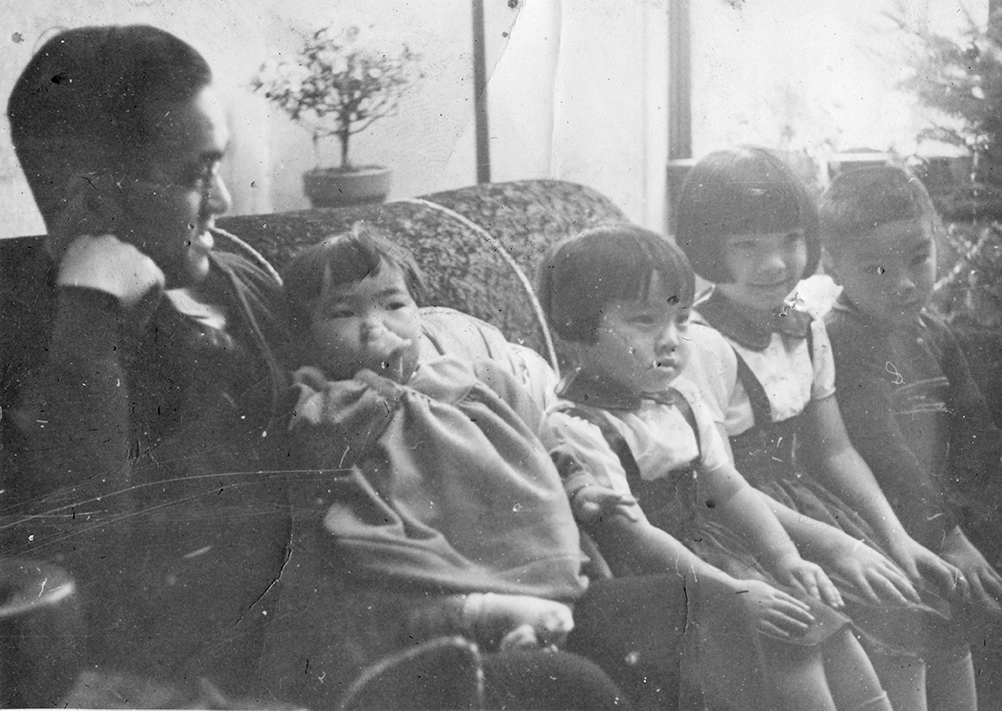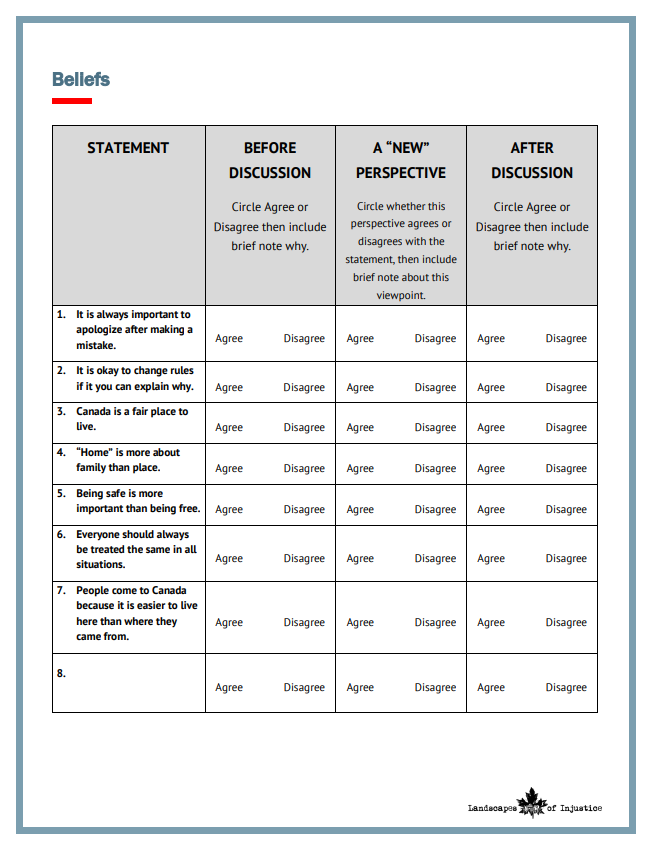Beliefs:
Introducing the Issues
Using a “Beliefs” statement chart, students begin to think about some of the key issues behind this unit before the actual study of the content.
 Scroll down
Scroll down
Why
Know
- Immigration to BC (Canada) and resulting growth of cities
- Contributions of immigrants to Canada’s development
Do
- Ask questions; gather, interpret, and analyze ideas; and communicate findings and decisions
Core Skills
- Understand interconnected aspects of cultural identity (Positive Personal and Cultural Identity)
First People’s Principles of Learning
- Learning is embedded in memory, history, and story
- Learning is holistic, reflexive, reflective, experiential, and relational (focused on connectedness, relationships and a sense of place)
How
MATERIALS
- Introduce students to the statements on the Beliefs handout.
- Inform students that they will evaluate some statements based on their beliefs. This activity generates discussion and thinking about some of the issues students will be investigating in this unit.
- Students will be required to give opinions and to support those. (This will enable the teacher to survey baseline attitudes held by students.)
- Students will give opinions about several statements. Since they are giving opinions, there are no incorrect answers. Opinions may change as students acquire more information.
- The blank box can be used for any issue the teacher or students want to include.
- Hand out the sheet with the statements. Teacher reads the statements aloud with the class. Under the “Before Discussion” section students put “Agree” or “Disagree” to reflect how they feel about each statement. “Agree” means the student agrees with the statement or feels that the statement is correct. “Disagree” means the student disagrees with the statement or feels that the statement is incorrect. The strict “Agree” or “Disagree” may pose a problem for fence sitters.
- Emphasize doing the “Before Discussion” section only, and students should do this independently (because they may change their minds after they hear other people’s opinions). Teachers may want students to do this first part in pen so that they cannot change their initial responses. Students are forced to make independent decisions.
- Once students have finished the “Before Discussion” section, put up two signs on opposite sides of your classroom: “Agree” and “Disagree.” Read the first statement. Students stand under the answer they chose. Students explain why they chose the answers they did. Once students have given their opinions, allow them to change their answers and stand under their “After Discussion” answer.
- Changes in answers may generate further discussion. Some suggested questions are:
- Why did you agree or disagree?
- What would be an example?
- What are your reasons for saying this?
- What led you to that belief?
- How could we find out if this is true or false?
- Who is in a position to know if that is the case?
- Students go back to their desks to fill in their “After Discussion” answer.
Repeat until all statements have been covered.
Make critical thinking skills explicit. Give students words such as “metacognition” (thinking about their thinking) and “empathy” (being able to see things from other people's perspective). Did you change your mind on any of the statements after discussion? Why did you (or why didn’t you) change your mind? How did your thinking change over time?
This kind of discussion prepares students for the Historical Thinking Concepts. Examples:
- Significance: How is this important?
- Evidence: What proof do I have?
- Continuity and Change, or Cause and Consequences: How do our opinions change over time as we gain more understanding?
- Historical Perspectives: How do others’ points of view affect my thinking?
Assessment Considerations
Beliefs are a baseline activity, early in the unit. Revisit students’ opinions from this activity in future lessons to enhance understanding of past discriminatory government policies and actions towards Japanese Canadians.
SUGGESTED JOURNAL REFLECTION PROMPTS
Make critical thinking skills explicit. Give students words such as “metacognition” (thinking about their thinking)and “empathy” (being able to see things from other people's perspective). Did you change your mind on any of the statements after discussion? Why did you (or why didn’t you) change your mind? How did your thinking change over time?
This kind of discussion prepares students for the Historical Thinking Concepts. Examples:
- Choose at least 2 statements and explain why you agreed or disagreed with the statements. Some sentence starters:
- I believe statement #1 is true because…
- It is not okay to change rules because…
- I used to think… now I think… because…
- Respond to these guiding questions:
- What is my idea of fairness?
- How does my thinking change (over time, as I learn new information, as I listen to other people, etc.)?
- Use the premade template

